Designers Europe
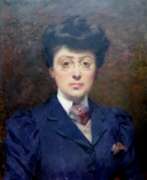

Louise Abbéma was a French painter, sculptor, and designer, celebrated for her work during the Belle Époque. Born in Étampes in 1853 into an affluent Parisian family, she became well known for her portraits, particularly of the famous actress Sarah Bernhardt, and for decorative panels commissioned for various public buildings in Paris and the Palace of the Governor in Dakar, Senegal.
Abbéma's art often depicted the upper echelons of French society and reflected the Impressionist style through her light and rapid brushstrokes. She was also notable for her involvement in the women's movement, where she contributed to the emerging image of the 'New Woman' by portraying androgynous figures and themes of intellectualism and freedom.
Among her many honors, Abbéma was awarded the Palme Academiques in 1887, nominated as the Official Painter of the Third Republic, and in 1906, she became a Chevalier of the Legion of Honour. Her works, such as "Lunch in the Greenhouse" and "Portrait of Sarah Bernhardt," have seen a resurgence in popularity as the contribution of women to historical art gains more recognition.
For those interested in the evocative and historically rich artworks of Louise Abbéma, consider subscribing to our updates. We'll keep you informed about new sales, auctions, and exhibitions featuring Abbéma's work, ensuring you're always connected to the latest offerings in the art and antique collectors' sphere.


Yaacov Agam, an Israeli kinetic and optical artist born on May 11, 1928, is celebrated for revolutionizing the visual arts with his dynamic and interactive creations. Agam's pioneering work extends beyond traditional static art forms, inviting viewers into a transformative experience that changes with perspective and movement. His art, deeply rooted in his Jewish heritage and mysticism, eschews representational imagery for abstract, geometric forms and vibrant colors, engaging the observer's perception to complete the visual experience.
Notably, Agam's contributions to kinetic art have not only garnered him international acclaim but also led to his works commanding the highest prices among Israeli artists at auction. His innovative "Agamographs" use lenticular printing to create illusions of depth and motion, highlighting his fascination with the interplay between art, viewer, and the temporal dimension. Agam's significant exhibitions include retrospectives at the Musée National d'Art Moderne in Paris and the Guggenheim Museum in New York. His achievements are further recognized through multiple awards and the establishment of the Yaacov Agam Museum of Art in his hometown of Rishon LeZion, Israel, dedicated to his vision of art in motion.
For collectors and art and antiques experts, Agam's work represents a profound exploration of perception, time, and spirituality, offering a unique and engaging experience. His art invites us to see beyond the visible, reminding us of the ever-changing nature of reality and our active role in its perception. To stay updated on new product sales and auction events related to Yaacov Agam, sign up for updates and immerse yourself in the dynamic world of one of the most influential modern artists.
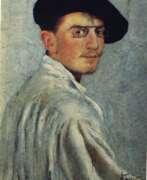

Leon Bakst (Russian: Лев Самойлович Бакст) was a prominent Russian painter and stage designer, celebrated for his innovative contributions to the world of art and theater. Born in the late 19th century, Bakst became a central figure in the cultural renaissance that swept through Russia and Europe, leaving an indelible mark on the visual and performing arts.
Bakst's work is distinguished by its rich use of color, intricate patterns, and imaginative compositions, which brought to life the exotic and often fantastical themes of the ballets and operas for which he designed. His association with the Ballets Russes, a groundbreaking ballet company that performed across Europe and America, solidified his reputation as a visionary artist. The costumes and sets he created for productions like "The Firebird" and "Scheherazade" were celebrated for their creativity and exoticism, influencing not only the world of theater but also fashion and interior design.
His art extends beyond the stage, with paintings and illustrations that capture the same vibrancy and innovation found in his theatrical work. Museums and galleries around the world, including the State Russian Museum in St. Petersburg and the Metropolitan Museum of Art in New York, house his works, allowing art lovers to experience the magic of Bakst's creations.
For collectors and experts in art and antiques, Leon Bakst's work offers a unique glimpse into a transformative period of cultural history, where the boundaries of art and performance were reimagined. His legacy continues to inspire and captivate, making his pieces highly sought after in the art world.
We invite enthusiasts and collectors to sign up for updates on new product sales and auction events related to Leon Bakst. This subscription ensures you remain informed about opportunities to acquire pieces connected to this extraordinary artist's legacy, without any overbearing commitments. Join us in celebrating the enduring impact of Leon Bakst's art and design.
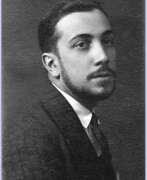

Boris Konstantinovich Bilinsky (Russian: Борис Константинович Билинский) was a Russian-born artist and designer, renowned for his significant contributions to set and costume design in theater, cinema, and ballet, as well as his accomplishments as a graphic artist. Bilinsky's career took him across Europe, from Russia to Germany, France, and eventually Italy, reflecting a life influenced by political and social upheavals of the early 20th century. His departure from Russia in 1920 marked the beginning of a prolific period in Berlin where he collaborated with prominent Russian emigre movie directors and theater companies. By 1923, Bilinsky had moved to Paris, becoming an integral part of the French cinema scene, notably designing posters and publicity material for the French release of Fritz Lang’s "Metropolis" in 1927, a commission that solidified his reputation as a leading cinema poster artist.
Bilinsky's creative vision extended beyond the cinema to the world of ballet and opera, where he made significant contributions, including designing for the Teatro alla Scala in Milan. His work for the "Follie viennesi" ballet in 1947, with music by Johann Strauss, showcased his ability to blend artistic freedom with the thematic requirements of the productions, employing vibrant colors and shapes that echoed the circular motion of a waltz.
Throughout his career, Bilinsky's versatility and talent were evident in the range of his work, from cinema posters to set and costume designs for prestigious theater productions. His legacy is preserved through collections and exhibitions, ensuring his artistic contributions continue to inspire and influence.
For collectors and experts in art and antiques, Boris Konstantinovich Bilinsky remains a figure of great interest due to the breadth of his work and the artistic prowess he displayed across various mediums. His contributions to the visual arts, particularly in the realm of set and costume design, cement his place in history as a versatile and innovative artist whose work transcends time and geographic boundaries.
Sign up for updates on Boris Konstantinovich Bilinsky to stay informed about new product sales, auctions, and exhibitions related to this remarkable artist. Your subscription will ensure you are the first to know about these exclusive events and opportunities.
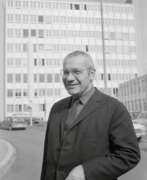

Max Bill, a Swiss artist, architect, painter, typeface designer, industrial designer, and graphic designer, emerged as a key figure in 20th-century art and design. Born in Winterthur, Switzerland, in 1908, Bill's education at the Bauhaus under luminaries like Wassily Kandinsky, Paul Klee, and Oskar Schlemmer profoundly influenced his multidisciplinary approach. His work spans from graphic design, where he was instrumental in shaping Swiss design from the 1950s, to product design with iconic creations like the Ulmer Hocker, a versatile stool designed in 1954.
Bill's contributions to concrete art and his role in founding the Ulm School of Design alongside Inge Aicher-Scholl and Otl Aicher in 1953, mark him as a pioneer who blurred the lines between art, design, and architecture. His theoretical writings and teaching at the Ulm School further underscored his commitment to integrating art with science, shaping a generation of designers and artists.
Noteworthy among his architectural works are his own house and studio built in Zurich-Höngg in the early 1930s and a series of public sculptures that challenge perceptions and engage public spaces in innovative ways. His legacy also includes influential roles in politics, contributions to the field of education, and the establishment of foundations to preserve his work and ideals.
Bill's extensive oeuvre, which also includes timepieces designed for Junghans and a multitude of sculptures, demonstrates his belief in the unity of form and function and the possibility of art to embody the principles of the new physics of the 20th century. His works are not only held in high regard for their aesthetic and functional qualities but also for their ability to convey complex theoretical ideas in tangible forms.
For collectors and experts in art and antiques, Max Bill remains a figure of immense importance, whose works continue to inspire and influence contemporary design and art practices. Sign up for updates related to Max Bill to stay informed about new product sales and auction events showcasing his remarkable contributions to modern art and design.


Mario Botta, a Swiss architect born in 1943, is celebrated for his profound contributions to contemporary architecture. His work is characterized by a robust geometric style and profound respect for historical context, often integrating modern elements with traditional designs. Botta's designs are known for their distinct use of brick and strong shapes, such as circles, squares, and triangles, which make his buildings instantly recognizable.
Among his notable projects are the San Francisco Museum of Modern Art and the Cathedral of the Resurrection in Evry, France. These structures exemplify his approach to blending new construction technologies with classical forms. The museum, in particular, showcases his ability to manipulate space and light, creating dynamic environments for displaying art. His buildings are not just structures but are often considered sculptural works that enhance their surroundings.
Mario Botta's influence extends beyond architecture into design and education, where he has mentored generations of architects. His work is displayed in numerous exhibitions worldwide and serves as a testament to the enduring power of integrating contemporary design with traditional elements. Collectors and experts in architecture appreciate Botta’s unique ability to transform ordinary spaces into extraordinary places.
For those interested in the innovative work of Mario Botta, consider signing up for updates on new project unveilings and auction events related to his creations. This subscription ensures you stay informed about the latest developments and opportunities to engage with Botta's influential designs.
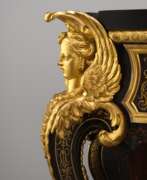

André-Charles Boulle, a French artist and cabinetmaker, was celebrated for his mastery in marquetry, a decorative technique involving inlaid veneers of wood, metal, and tortoiseshell. Born in Paris in 1642, Boulle's work defined luxury and sophistication in 17th and 18th-century French furniture, earning him the title of "Premier ébéniste du Roi" under Louis XIV. His contributions to art and culture extend beyond mere craftsmanship, embodying the opulence of the Louis XIV style and influencing European decorative arts profoundly.
Boulle's innovative techniques, particularly his unique use of marquetry, known as "Boulle work," involved intricate patterns of brass, pewter, and tortoiseshell, setting new standards for furniture design. This approach allowed him to create stunning visual effects, with his creations including clocks, cabinets, and tables that showcased both artistic flair and technical brilliance. His work, characterized by elaborate motifs and an exceptional blend of materials, is regarded as the epitome of Baroque artistry, blending sculpture, painting, and architecture into functional objects of beauty.
Several of Boulle's masterpieces are preserved in prestigious museums, such as the Louvre and the Palace of Versailles, where they continue to captivate visitors with their intricate details and historical significance. Notable works attributed to him, like the intricate coffers on stands and monumental cabinets housed in the J. Paul Getty Museum, reflect his role as a "painter in wood," celebrating French military victories and the grandeur of the Sun King's court. These pieces, never signed but attributed to him based on stylistic elements and historical records, highlight Boulle's innovative use of materials and his impact on the decorative arts.
For collectors and experts in art and antiques, André-Charles Boulle's work represents the zenith of French decorative arts. His legacy is not only in the beauty of his creations but also in the techniques he perfected, which continue to inspire contemporary designers and craftsmen. Those interested in the elegance and history of Boulle's work are encouraged to sign up for updates on new product sales and auction events related to this iconic artist. This subscription offers a unique opportunity to connect with the world of André-Charles Boulle, ensuring enthusiasts are informed of the latest discoveries and offerings that celebrate his enduring influence on culture, art, and design.
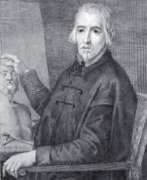

Alonso Cano was a multifaceted Spanish artist, renowned for his remarkable contributions in painting, sculpture, and architecture. Born in Granada in 1601, Cano is often celebrated as the "Spanish Michelangelo", a testament to his diverse artistic talents and significant impact on the Baroque era. His career, marked by a blend of Italian Mannerism and Baroque style, was a journey through various Spanish cities, each phase contributing uniquely to his artistic evolution.
In Seville, Cano trained under Francisco Pacheco, where his initial works like "San Francisco de Borja" (Seville Museum of Fine Arts) displayed a blend of Tenebrism and a brighter, more lyrical color palette. This period also saw the birth of works like "La Visión de San Juan" (Wallace Collection, London), signaling a transition in his style. Madrid, however, marked a significant turn in Cano's career. His works for the Buen Retiro Palace and the Alcázar showcase an evolution towards elegant, dynamic Baroque forms with lighter tonalities, influenced by the 16th-century Venetian masters.
Cano's return to Granada in 1652 was a homecoming that not only reinvigorated the Granada School but also marked his most prolific period. His masterpieces during this time include the series of paintings on the life of the Virgin in Granada Cathedral, a remarkable testament to Baroque art. Notably, his "Inmaculada Concepción" (1648) and "Nacimiento de la Virgen" (1663-1664) in the Cathedral stand as crowning achievements of his painterly career.
Equally impressive is Cano's sculptural work, where his polychrome wooden statue of the Immaculate Conception (1655) in Granada Cathedral is often hailed as his magnum opus. Despite sculpture being a secondary focus to his painting, his works, such as the Inmaculada in San Julián Church, Sevilla, and the smaller, yet exquisitely crafted, Inmaculada of the facistol in Granada Cathedral, resonate with the delicate beauty pointing towards Rococo art.
Cano's architectural prowess is exemplified in the design of Granada Cathedral's façade, an original piece of Spanish Baroque architecture. His artistic journey was not just a personal endeavor but a pivotal influence in the transition of Spanish painting towards a more idealist trend alongside Velázquez.
For art collectors and experts, Alonso Cano's works remain a cornerstone of the Baroque era, showcasing a blend of dramatic realism and spiritual depth. His influence extends beyond the boundaries of Granada, leaving an indelible mark on the world of art and culture.
To stay informed about new discoveries, product sales, and auction events related to Alonso Cano's works, sign up for our updates. This subscription focuses solely on providing relevant news in the art and antiques realm, especially concerning Cano's invaluable contributions.
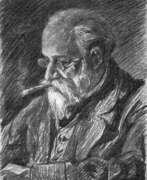

Adolf Iosifovich Charlemagne (Russian: Адольф Иосифович Шарлемань) was a renowned Russian painter, born in 1826 in Saint Petersburg. He excelled in historical, genre, and battle scenes, deeply influenced by his artistic lineage—his father was an architect and his grandfather a sculptor. Educated at the Imperial Academy of Arts under Fyodor Bruni and Bogdan Willewalde, Charlemagne's works are celebrated for their historical accuracy and intricate details.
Charlemagne's notable works include "The Capture of Kazan by Ivan the Terrible" and "The Battle of Kulikovo," which vividly capture significant moments in Russian history. His paintings are known for their meticulous attention to detail, dramatic compositions, and ability to convey the emotional intensity of historical events. These masterpieces are housed in prestigious Russian museums, showcasing his contributions to Russian cultural heritage.
Throughout his career, Charlemagne received numerous accolades, including the titles of Academician and Professor at the Imperial Academy of Arts. His dedication to historical accuracy and artistic excellence made him a prominent figure in Russian art.
For collectors and enthusiasts, owning a piece by Adolf Iosifovich Charlemagne means acquiring a significant part of Russian history. To stay updated on new product sales and auction events related to Charlemagne's works, sign up for our updates today.
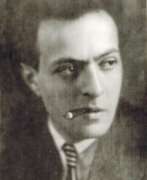

Ilya Grigorevich Chashnik (Russian: Илья Григорьевич Чашник) was a Russian Suprematist artist, known for his close association with Kazimir Malevich and as a pioneering member of the UNOVIS school. Born in 1902 in Lucyn, Russian Empire (now Ludza, Latvia), Chashnik's artistic journey began in Vitebsk, where he was deeply influenced by the avant-garde movements of the early 20th century. He studied at the Vitebsk Artistic-Practical Institute under Malevich and became one of his most faithful disciples, embracing Suprematism's focus on basic geometric forms and the use of a limited color palette.
Chashnik's work is characterized by his exploration of Suprematist principles across various forms of art, including painting, metalwork, and ceramics. His art is distinguished by a dynamic use of forms, often incorporating complex tonal relationships and achieving a sense of rhythm and symmetry. Notably, Chashnik applied these principles to the design of everyday objects, making significant contributions to porcelain design at the Lomonosov Porcelain Factory. His designs for the factory revealed his inventive approach, combining Suprematist aesthetics with practical applications.
Despite his untimely death in 1929 at the age of 27, Chashnik's legacy in the art world remains profound. His works are held in several prestigious collections, including the Thyssen-Bornemisza Museum in Madrid and the Museum of Modern Art (MoMA) in New York. These institutions recognize Chashnik not just for his artistic output but also for his significant role in the development of Suprematism and its application beyond traditional canvases.
For those interested in the intersection of avant-garde art and practical design, Ilya Chashnik's work offers a fascinating study. His ability to translate the visionary ideas of Suprematism into tangible objects marks him as a key figure in the movement's history. To stay updated on new insights and sales related to Ilya Grigorevich Chashnik's work, sign up for updates and don't miss out on the opportunity to explore the works of this groundbreaking artist.
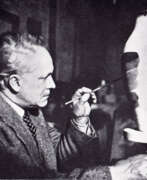

Raoul Dufy, a renowned French artist, is celebrated for his vibrant and decorative style, which left a significant mark in the realms of Fauvism and Post-Impressionism. Born in 1877 in Le Havre, France, Dufy's artistic journey was profoundly influenced by Henri Matisse's Fauvist work "Luxe, Calme et Volupté," which he encountered at the Salon des Indépendants in 1905. This experience steered him towards Fauvism, a style that emphasized bold contours and bright colors.
Dufy's artistic evolution saw him briefly embrace Cubism around 1920, after which he developed a unique approach. This approach, often referred to as stenographic, was characterized by skeletal structures, foreshortened perspectives, and the use of thin, quickly applied washes of color. His works, known for their cheerful and fashionably decorative nature, often depicted scenes of leisure like yachting, the French Riviera, and chic parties, capturing the essence of the period's optimism.
In addition to his painting, Dufy was also a commercial artist, illustrator, and designer, contributing significantly to textile design and public murals. His large-scale public art commissions combined modern and allegorical subjects with exuberant outlines and intense colors, showcasing a modernist take on traditional mural work. Notable works by Dufy include "The Regatta," "The Harvester," and the monumental "The Electricity Fairy," a large mural commissioned for the 1937 World's Fair in Paris.
His works are housed in prestigious public collections worldwide, including the Art Institute of Chicago, the Musée d'Art Moderne de Paris, and the National Gallery of Art in Washington, D.C. Despite his artistic achievements, Dufy's focus on decorative art and the lack of engagement with wider social concerns has led to a varied critical reception of his work. Nonetheless, his contribution to 20th-century art, particularly in popularizing a vibrant and illustrative style, remains undisputed.
If Raoul Dufy's artistry captivates you and you wish to stay informed about the latest artworks, exhibitions, and auction events related to this remarkable artist, we invite you to sign up for our updates. By subscribing, you'll receive timely notifications about new pieces for sale and upcoming auctions. This is a wonderful opportunity for collectors and art enthusiasts to enhance their appreciation and possibly their collections of Dufy's work. Stay connected with the world of art and don't miss any chance to acquire unique pieces by this celebrated artist.
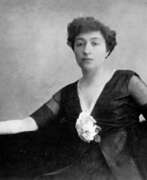

Aleksandra Aleksandrovna Ekster (Russian: Алекса́ндра Алекса́ндровна Эксте́р), a luminary of the Russian avant-garde, was a painter and designer whose work traversed the boundaries of Cubo-Futurism, Suprematism, and Constructivism, eventually influencing the Art Deco movement. Born in Białystok (then part of the Russian Empire, now Poland) and later splitting her life among Kiev, St. Petersburg, Moscow, Vienna, and Paris, Ekster played a pivotal role in bridging Russian and European artistic movements. Her innovative approach to art was characterized by dynamic movement, vibrant color contrasts, and geometric compositions, which were evident in her paintings, theater set and costume designs, and educational endeavors.
Ekster's studio became a hub for the intellectual and artistic elite, hosting figures like poets Anna Akhmatova and Osip Mandelstam, as well as painters Pablo Picasso and Georges Braque during her stays in Paris. Her involvement in significant art exhibitions, such as the Salon des Indépendants and the Salon de la Section d'Or in Paris, showcased her works alongside those of Jean Metzinger, Marcel Duchamp, and others, marking her as a key figure in the avant-garde community.
Beyond painting, Ekster's contributions to theater and design were profound. She worked on costume and set designs for Alexander Tairov's Chamber Theatre and participated in the revolutionary festivities' decoration in Kiev and Odessa. Ekster's pedagogical efforts included teaching at the Higher Artistic-Technical Workshop (VKhUTEMAS) in Moscow, fostering a new generation of avant-garde artists.
Ekster's work is housed in various international and private collections, reflecting her lasting impact on the art world. Her ability to integrate different genres and styles, along with her commitment to experimentation and innovation, made her one of the most influential women in the Russian avant-garde.
For those fascinated by the pioneering spirit of Aleksandra Aleksandrovna Ekster and the avant-garde movement, signing up for updates on new product sales and auction events related to her work is a compelling way to stay informed. This subscription ensures enthusiasts and collectors are always in the loop regarding opportunities to engage with Ekster's enduring legacy.
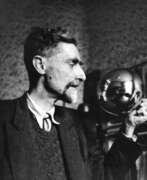

Maurits Cornelis Escher, a Dutch artist renowned for his mind-bending works that blend mathematics with visual art, has left an indelible mark on both culture and the art world. Born in 1898 in the Netherlands, Escher specialized in graphic arts, creating lithographs, woodcuts, and mezzotints that are celebrated for their inventive exploration of perspective, space, and the infinite. His ability to distort reality and challenge perceptual norms has made his works timeless, appealing to a broad audience beyond traditional art collectors and experts.
Escher's art is distinguished by its unique blend of mathematical precision and artistic imagination, making him a figure of fascination not only among artists and collectors but also mathematicians and scientists. His famous pieces, like "Relativity," "Waterfall," and "Drawing Hands," exemplify his skill in creating impossible constructions and exploring the concept of infinity through tessellation and symmetry. These works are housed in prestigious museums around the world, including the Escher Museum in The Hague, Netherlands, which is dedicated to his life and works.
For collectors and experts in art and antiques, Escher's creations offer a window into the seamless integration of science and art. His legacy continues to influence contemporary art, graphic design, and architecture, making his pieces highly sought after in the art market. The enduring appeal of Escher's work lies in its ability to engage the mind and challenge viewers' perceptions of reality, making him a pivotal figure in the world of art and culture.
To stay informed about new product sales and auction events related to Maurits Cornelis Escher, we invite you to sign up for updates. This subscription is designed specifically for enthusiasts and collectors eager to explore the fascinating intersections of art, mathematics, and perception that Escher's work represents.
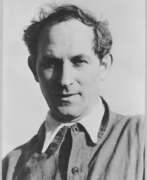

Naum Gabo, a pivotal figure in the evolution of twentieth-century sculpture, was a Russian-American artist renowned for his innovative approach to constructivism and kinetic art. Gabo's artistry transcended mere form to delve into the philosophical and spatial dynamics of sculpture, marking him as a pioneer in his field. He significantly influenced the avant-garde movements across Europe, particularly with his manifesto that challenged the concepts of Cubism and Futurism, advocating for art that embraced abstract reality and spiritual experience. His tenure at VKhUTEMAS, alongside notable contemporaries like Kandinsky and Rodchenko, was a testament to his influential role in post-Revolution Russian art.
Gabo's use of materials such as metal and glass was not just a stylistic choice but a profound exploration of volume and space without the reliance on mass, embodying the Constructivist ideology of functional art. His works, like "Column," showcased his interest in creating sculptures that resonated with intellectual and emotional appeal rather than just physical senses. This innovative approach to sculpture continued throughout his career, evident in his contributions to both the art and architectural domains, including his experimental architectural designs like the proposal for the Palace of the Soviets.
Throughout his life, Gabo's artistic journey was marked by a constant exploration of the interplay between space and time, evident in pieces such as "Spiral Theme" and his involvement in kinetic sculpture. His move across countries, from Russia to the United States, was reflective of his quest for new artistic contexts and his escape from political turmoil. Gabo's legacy is preserved in significant collections and museums worldwide, including the Museum of Modern Art (MoMA) in New York, where his works continue to inspire and captivate audiences.
For those intrigued by Naum Gabo's profound impact on modern sculpture and constructivism, signing up for updates can enrich your knowledge and keep you informed about upcoming sales and auction events featuring his work. This is an opportunity to explore the depths of Gabo's contributions to art and architecture, ensuring enthusiasts and collectors stay connected to his enduring legacy.


Grigor Khanjyan (Russian: Григор Сепухович Ханджян), an Armenian artist born in Yerevan on November 29, 1926, stands out as a prominent figure in Expressionism and Armenian art. Known for his rich illustrations of historical novels and poems, Khanjyan's artworks delve deep into the heart of Armenian identity and history, transcending mere visual appeal to embody the spirit and struggles of a nation.
Khanjyan's journey into the arts began at Terlemezian Art College in Yerevan, culminating in his graduation from the Academy of Fine Arts, where he was deeply influenced by Eduard Isabekyan's thematic-compositional art. Throughout his career, Khanjyan navigated the complexities of Soviet Armenia with a distinct nationalist sentiment, often choosing subjects that celebrated Armenian culture and history over Soviet ideals. His notable works include illustrations for Paruyr Sevak's "The Unsilenceable Belfry" and tapestries like "Battle of Avarayr" and "Creation of Armenian Alphabet," which were commissioned by the Armenian Apostolic Church and later reproduced as murals at the Yerevan Cascade, now part of the Cafesjian Museum of Art.
Khanjyan's murals, especially the monumental triptych "History of Armenia" at the Cafesjian Center for the Arts, serve as a testament to his commitment to depicting key moments in Armenian history. Despite facing challenges such as the collapse of the Soviet Union and personal health issues, Khanjyan's dedication never wavered. His final work, "The Rebirth of Armenia," remained unfinished at his death on April 19, 2000, but his legacy endures through his significant contributions to Armenian art and culture.
For art collectors and experts, Khanjyan's works represent not only aesthetic achievements but also the enduring spirit of Armenian history and identity. His awards, including the title of People's Artist of the Soviet Union and honorary memberships in various academies, underscore his significance in the realm of art.
To stay informed on exhibitions and sales featuring Grigor Khanjyan's art, sign up for updates. This subscription ensures you'll be the first to know about new opportunities to engage with the work of this remarkable Armenian artist, connecting you directly to the rich tapestry of Armenian heritage and artistic excellence.


Lazar Markovich Lissitzky (Russian: Ла́зарь Ма́ркович Лиси́цкий) was a pivotal figure in the avant-garde art movement of the early 20th century, whose contributions spanned across multiple disciplines including painting, architecture, and graphic design. Born in Pochinok, Russian Empire (now in Smolensk Oblast, Russia), Lissitzky is renowned for his profound influence on the development of Constructivism, a movement characterized by the integration of technology and industry into the arts.
Lissitzky's work is distinguished by its innovative use of geometric forms, bold colors, and dynamic compositions, which sought not only to reflect the modern industrial world but also to actively participate in shaping it. His artworks and theories were instrumental in bridging the gap between the avant-garde movements in Russia and Western Europe, facilitating a cross-cultural exchange that enriched the development of modern art. Among his most notable contributions are his "Proun" series, an acronym for "Project for the Affirmation of the New" in Russian, which encapsulates his vision of art as a transformative social force.
His legacy is preserved in some of the world's most prestigious museums and galleries, including the Museum of Modern Art in New York and the Russian State Museum in Saint Petersburg. These institutions house key works that exemplify Lissitzky's groundbreaking approach to art and design, making them a focal point for collectors and experts in the field of art and antiques.
For those deeply invested in the evolution of modern art and its profound impact on culture and society, Lissitzky's work offers invaluable insights into the creative exploration of form and space. His contributions continue to inspire contemporary artists and designers, emphasizing the enduring relevance of his vision.
We invite collectors and art experts to sign up for updates on new product sales and auction events related to Lazar Markovich Lissitzky. This subscription is an opportunity to stay informed about the latest acquisitions and offerings that celebrate the legacy of a visionary artist whose work continues to resonate with audiences worldwide.


Sergey Vasilyevich Malyutin (Russian: Сергей Васильевич Малютин) was a distinguished Russian painter, architect, and designer, celebrated for his multifaceted contributions to the world of art and design. Born in Moscow in 1859 to a merchant family, Malyutin's artistic journey began after an exhibition by the Peredvizhniki inspired him to pursue art. His formal education at the Moscow School of Painting, Sculpture and Architecture honed his talents, leading to a diverse career that spanned painting, set design for operas and ballets, and architectural endeavors.
Malyutin is perhaps best known internationally for designing the first matryoshka doll in 1890, a seminal work that has become an iconic symbol of Russian culture. His involvement in the Arts and Crafts Movement influenced his work, integrating traditional Russian folk motifs into his designs and paintings. Notably, his architectural designs, including the Church of the Holy Spirit in Talashkino and the Pertsov House in Moscow, showcase his dedication to the Russian Revival movement, blending fantastic folk motifs with architectural creativity.
Throughout his career, Malyutin also played a significant role in education, teaching at the Moscow School of Painting, Sculpture and Architecture and advocating for Socialist Realism. His contributions to Russian art were not limited to his creations; he was instrumental in founding the Association of Artists of Revolutionary Russia, emphasizing the importance of art in societal development.
For those interested in exploring the legacy of Sergey Malyutin, his works offer a window into the fusion of traditional Russian art with the innovative currents of his time. Collectors and experts in art and antiques will find his contributions to Russian arts and crafts, especially his role in the creation of the matryoshka doll, to be of particular interest.
To stay updated on exhibitions and auction events featuring Sergey Vasilyevich Malyutin's work, sign up for updates. This subscription is an invaluable resource for enthusiasts looking to deepen their understanding of Malyutin's impact on Russian art and design.
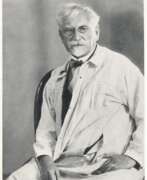

Alfons Maria Mucha, a Czech Art Nouveau painter and decorative artist, was celebrated for his innovative contributions to art, particularly his distinctive style that became synonymous with the Art Nouveau movement. Born in 1860 in the Moravian town of Ivancice, Mucha exhibited artistic talent from a young age, initially showing a proclivity for drawing and music, which were closely intertwined in his perception of creative expression. Despite early financial and educational hurdles, Mucha's passion for art led him to Vienna and subsequently Munich, where he honed his skills and absorbed influences that would shape his future work.
Mucha's career took a pivotal turn in Paris, where his poster for the actress Sarah Bernhardt's play "Gismonda" gained him immediate fame. This partnership with Bernhardt catalyzed a prolific period during which Mucha produced a flurry of artworks, including paintings, posters, and illustrations, as well as designs for jewelry, wallpaper, and theatre sets. His works are characterized by their depiction of beautiful young women in flowing robes, surrounded by lush, natural elements and often featuring pastel colors—a stark contrast to the bold hues preferred by his contemporaries.
Despite his commercial success, Mucha aspired for his art to convey a deeper spiritual message rather than merely adhering to the trendy Art Nouveau style. This led him to undertake projects that were more personal and culturally significant, such as "The Slav Epic"—a series of paintings celebrating Slavic history. Mucha's legacy is not only preserved in his diverse body of work but also in his influence on the aesthetic values of craftsmanship and design.
Collectors and experts in art and antiques continue to venerate Mucha for his unique ability to blend artistic beauty with cultural expression. His works, which are housed in museums and galleries worldwide, remain a testament to his vision and creativity.
For those keen on exploring the world of Alfons Maria Mucha further and staying updated on new sales and auction events related to his work, signing up for updates is an excellent way to ensure you never miss an opportunity to appreciate or acquire pieces related to this iconic artist. This subscription is tailored for collectors and art enthusiasts, focusing solely on new product sales and auction events concerning Mucha's legacy.
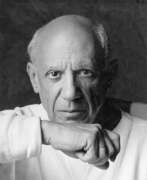

Pablo Ruiz Picasso, a Spanish artist renowned for his revolutionary contributions to the 20th-century art scene, is a figure that resonates profoundly with collectors and art experts. His unique blend of talents in painting, sculpture, printmaking, and ceramic art, infused with his time in France, positioned him as a pivotal character in modern art history.
Picasso's artistic journey was marked by distinct periods, each showcasing his evolving style and genius. His early years were characterized by the Blue Period (1901-1904), followed by the Rose Period (1904-1906), and then the African-influenced Period (1907-1909). Picasso's name is synonymous with Cubism, a movement he co-founded, which significantly altered artistic perspectives and methods. Works like "Les Demoiselles d'Avignon" (1907) and "Guernica" (1937) are emblematic of his cubist legacy, the latter being a poignant anti-war statement that remains influential.
His later years saw a return to more traditional styles, with neoclassical and surrealist influences becoming evident. Works from these phases reflect a deep engagement with mythological themes, as seen in "Faun with Stars" (1955), symbolizing his late-life romance with Jacqueline Roque, his second wife.
Picasso's prolific output and innovative spirit made him a legend in his own time, a status that only grew after his death. His works, housed in major museums and private collections worldwide, continue to captivate and inspire.
As a collector or expert in art and antiques, staying informed about Picasso's works, their auction events, and sales is essential. To stay updated on the latest developments and opportunities related to Pablo Picasso, sign up for our specialized updates. Rest assured, this subscription will focus solely on new product sales and auction events pertaining to Picasso's art, ensuring that you receive only the most relevant and valuable information.
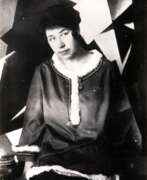

Lyubov Sergeyevna Popova (Russian: Любовь Сергеевна Попова) was a distinguished Russian avant-garde artist, celebrated for her pivotal role in the development of Cubism, Suprematism, and Constructivism during the early 20th century. Her innovative approach to art combined dynamic abstraction with geometric precision, reflecting the revolutionary spirit of her time. Popova's work transcends mere visual appeal, embodying the synthesis of artistic experimentation and the utopian ideals of her era.
Popova's artistic journey was marked by her relentless exploration of various mediums, including painting, textile design, and theater set design. Her contributions to art were not confined to her canvases; she actively participated in designing costumes and sets for theatrical productions, thereby influencing the visual language of Russian Constructivism. Her notable works, such as "The Traveler" and her series of "Painterly Architectonics," are celebrated for their bold use of color and form. These pieces, often showcased in prestigious galleries and museums worldwide, highlight her mastery of abstract composition and her ability to convey movement and depth through geometric shapes.
Popova's legacy extends beyond her artistic achievements. She was a key figure in the Artist School movement, where she dedicated herself to education and the dissemination of avant-garde principles. Her commitment to cultural innovation made her a central figure in discussions on the role of art in society, particularly in the context of the Russian Revolution. Today, collectors and experts in art and antiques revere Popova's work for its historical significance and its contribution to the evolution of modern art.
For enthusiasts and connoisseurs seeking to delve deeper into the world of avant-garde art, Lyubov Sergeyevna Popova's work remains a beacon of innovation and creativity. We invite you to sign up for updates on new product sales and auction events related to Popova's art. This subscription is an opportunity to stay informed about the latest discoveries and offerings in the realm of this groundbreaking artist.
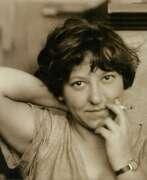

Varvara Fyodorovna Stepanova (Russian: Варва́ра Фёдоровна Степа́нова) was a Russian artist, a key figure in the avant-garde movement, particularly within the Constructivist branch that emerged in post-revolutionary Russia. Her work spans across various domains, including painting, graphic design, textile design, and theatrical set design. Stepanova's marriage and collaboration with fellow artist Aleksandr Rodchenko played a significant role in their creative exploration, where they together embarked on endeavors that significantly influenced the constructivist and avant-garde scenes.
Stepanova's contribution to the world of art and design was profound, especially in clothing and textile design, where she innovated with her approaches to "prodezodezhda" (production clothing) and "sportodezhda" (sports clothing), integrating geometric forms and functionality over aesthetic decoration. Her designs were not just artistic statements but were deeply embedded with practicality and efficiency, aiming to serve the new socialist society of the Soviet Union. Despite facing economic restrictions that limited the mass production of her designs, Stepanova's work in the clothing industry, particularly through her theatrical costumes, showcased her unique ability to blend art with functionality, emphasizing movements and creating garments that transformed the body into dynamic compositions.
In the realm of graphic design and propaganda, Stepanova's work alongside the early Soviet campaigns to promote literacy and her contribution to the magazine "LEF" illustrate her commitment to serving societal development through art. She utilized her skills in typography and book design to support educational and revolutionary propaganda, further highlighting her multifaceted talent and her dedication to the constructivist ideals.
Stepanova's textile designs, characterized by their bold graphic designs and innovative approach to fabric production, were another area where her artistic genius shone. Working at the First State Textile Factory and as a professor of textile design, she created over 150 fabric designs that featured geometric shapes and a limited color palette, showcasing her ability to generate dynamic, multi-dimensional designs despite technological and material limitations.
Her involvement in Constructivism was marked by a clear departure from the idea of art as a spiritual activity, towards a focus on serving the revolutionary development of society. Stepanova, along with Rodchenko and others, formed the first Working Group of Constructivists, advocating for art that was directly useful for society, leading her to design clothing that rejected class and gender distinctions in favor of functional, utilitarian aesthetics.
One of Stepanova's notable contributions was to the field of photomontage, particularly through her work "The Results of the First Five-Year Plan," which utilized this technique to promote Soviet achievements. This work exemplifies how she applied constructivist principles to serve the ideals of the Soviet Union, blending art with political propaganda in a manner that was visually striking and ideologically aligned with the goals of the newly established USSR.
For collectors and experts in art and antiques, Stepanova's work remains a fascinating exploration of how avant-garde principles can be applied across different mediums and for various societal needs. Her legacy in the constructivist movement and her contributions to the avant-garde are celebrated in collections and exhibitions around the world.
To stay updated on new product sales and auction events related to Varvara Fyodorovna Stepanova, sign up for updates. This subscription ensures you remain informed about opportunities to acquire pieces linked to this pivotal figure in Russian avant-garde art.
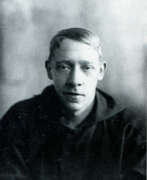

Vladimir Evgrafovich Tatlin (Russian: Владимир Евграфович Татлин) was a pioneering Russian and Soviet avant-garde artist, architect, and designer, celebrated for his innovative contributions to modern art, sculpture, and architecture. Born in Moscow, Tatlin's work transcended traditional boundaries, blending art with technology and ideology in a way that was revolutionary for his time. His dedication to merging functional design with artistic vision marked him as a key figure in the Constructivist movement, which sought to apply art to practical and social purposes.
Tatlin is best known for his ambitious but never-realized project, the Monument to the Third International, commonly referred to as Tatlin's Tower. This monumental structure, intended to serve as the headquarters for the Comintern in Petrograd, symbolized the utopian aspirations of the Soviet Union in the early 1920s. The tower's design, featuring a spiraling iron frame reaching 400 meters in height, embodied the avant-garde's commitment to innovation and the belief in art's power to shape a new societal order. Though it remained unbuilt, the tower's visionary design continues to influence architects and artists worldwide.
Beyond Tatlin's Tower, his contributions to the world of art include significant works in painting and sculpture. His approach to material and form, particularly his counter-reliefs, challenged traditional artistic conventions and opened new avenues for exploration in modern art. Tatlin's legacy extends to educational realms as well, where his tenure at the Moscow Vkhutemas (the Higher Art and Technical Studios) helped shape a generation of artists and designers. His works are preserved in major museums and galleries around the globe, serving as a testament to his enduring influence on culture and art.
For collectors and experts in art and antiques, Vladimir Tatlin's oeuvre represents a pivotal moment in the evolution of modernist expression. His innovative spirit and radical designs continue to inspire and provoke. If you wish to stay informed about new discoveries, sales, and auction events related to Vladimir Evgrafovich Tatlin, we invite you to sign up for our updates. This subscription is an excellent opportunity for enthusiasts and collectors to stay ahead in the dynamic world of art and antiques.
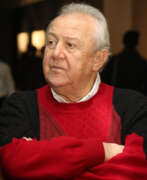

Zurab Konstantinovich Tsereteli (Russian: Зураб Константинович Церетели), a Georgian-Russian artist renowned for his monumental sculptures, has left an indelible mark on the landscape of modern art. Born in Tbilisi in 1934, Tsereteli expanded his artistic vision beyond painting after moving to Paris in the 1960s, where he was influenced by luminaries such as Picasso and Chagall. His work is characterized by a blend of dramatic, unconventional styles that have spurred debate but undeniably contributed to the cultural fabric of cities around the world.
Tsereteli's artworks, ranging from sculptures to paintings, are displayed globally, embodying his ethos that "art unites people." Noteworthy projects include the Peter the Great statue in Moscow, the Birth of the New Man in Seville, Spain, and the Tear of Grief in Bayonne, New Jersey, a poignant memorial to the victims of the 9/11 attacks. His commitment to fostering international cultural exchanges is evident in his role as the President of the Russian Academy of Arts and a UNESCO Goodwill Ambassador.
Beyond his public commissions, Tsereteli's contributions to education and the arts are profound. He founded the Moscow Museum of Modern Art and the Museum of Modern Art in Tbilisi, promoting modern and contemporary art in Russia and Georgia. His dedication to the Russian Academy of Arts underscores his belief in the importance of nurturing artistic talent and preserving the heritage of the academic school of fine arts.
For collectors and experts in art and antiques, Tsereteli's oeuvre offers a unique investment in pieces that are not only visually striking but also rich with cultural significance. His work encapsulates the dynamic interplay between traditional and contemporary art forms, making each piece a testament to his lifelong dedication to artistic innovation and cross-cultural dialogue.
To stay updated on new exhibitions, sales, and auction events related to Zurab Konstantinovich Tsereteli, sign up for updates. This subscription is a gateway to the latest developments in the world of a towering figure in art, offering exclusive insights into his ongoing contributions to the global art scene.
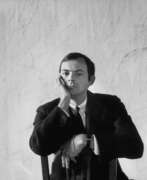

Cy Twombly, birth name Edwin Parker Twombly, was an American artist renowned for his contributions to painting, sculpture, and photography. Embracing a unique blend of classical references and graffiti-like elements, Twombly's work stands out in the art world for its distinctive, emotive scribbles and use of historical and literary themes. His art, often categorized within the realms of Abstract Expressionism and minimalism, diverges significantly in its lyrical sensitivity and intellectual depth, making it a subject of fascination and study among art collectors and experts.
Twombly's career, which spanned over six decades, was marked by a relentless pursuit of innovation and an intimate engagement with the materials of his art. His paintings, characterized by their gestural brushstrokes and cryptic symbols, evoke a range of emotions and ideas, bridging the gap between the personal and the universal. Notable works such as "Fifty Days at Iliam" displayed at the Philadelphia Museum of Art, and his series inspired by the seasons, showcase his ability to transform classical narratives into contemporary masterpieces. These pieces not only reflect Twombly's profound understanding of history and literature but also his capacity to reinterpret them within a modern context.
Furthermore, Twombly's sculptures, often overlooked next to his paintings, provide a tangible connection to the ancient world through their use of classical forms and unconventional materials. His work in this medium further emphasizes his fascination with the past, while simultaneously asserting the relevance of historical themes in contemporary art.
For collectors and experts in art and antiques, Cy Twombly's oeuvre represents an intriguing blend of poetic grace and intellectual rigor. His works, found in major museums and galleries worldwide, continue to inspire and challenge audiences with their enigmatic beauty and depth.
To stay informed about new product sales and auction events related to Cy Twombly's work, we invite you to sign up for updates. This subscription is an excellent opportunity for enthusiasts and collectors to remain connected to the evolving market of Twombly's art.
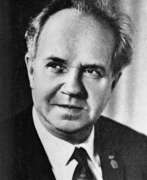

Nikolai Nikolaevich Zhukov (Russian: Николай Николаевич Жуков), a prominent Soviet graphic artist and illustrator, left a lasting mark on the world of visual arts with his distinctive style and thematic diversity. Born on December 2, 1908, in Moscow, Zhukov's early life was immersed in the rich cultural heritage of Russia, shaping his artistic endeavors from a young age. His education at the Nizhny Novgorod Art and Industrial College and the A.P. Bogolyubov Saratov Art College provided him with a solid foundation in the arts, leading to a prolific career that spanned several decades.
Zhukov's contributions to Soviet art are multifaceted, encompassing book illustrations, posters, and active participation in the Great Patriotic War as a war correspondent for Pravda. His role as the artistic director of the Studio of Military Artists named after M.B. Grekov underscored his commitment to depicting the Soviet people's resilience and heroism. Among his notable works are front-line posters such as "Defend Moscow!" and "They will not pass!", as well as illustrations for "The Tale of a Real Man" by Boris Polevoi.
Zhukov's artistic legacy is preserved through awards such as the People's Artist of the USSR (1963), the Stalin State Prize (1943, 1951), and the Order of Lenin (1967). His works continue to inspire and are celebrated in exhibitions and collections both in Russia and internationally. The establishment of the house-museum in Yelets in 1992 further commemorates his contributions to art and culture.
For collectors and art enthusiasts, the opportunity to engage with Zhukov's works offers a unique insight into the Soviet era's artistic expressions. To stay updated on sales and auction events featuring Nikolai Nikolaevich Zhukov's work, signing up for updates is a valuable resource for those passionate about collecting and appreciating Soviet art.
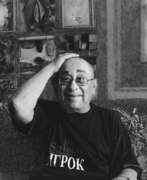

Boris Iosifovich Zhutovsky (Russian: Борис Иосифович Жутовский) was a Russian artist and illustrator, celebrated for his unique contributions to book art and graphic design. Born on December 14, 1932, Zhutovsky's career began to flourish after he graduated from the Moscow Polygraphic Institute in 1956. He worked in various Moscow publishing houses, where he left a significant mark with his expressive and sometimes grotesque graphic portraits and abstract painterly compositions.
Zhutovsky's artistic journey was notably marked by his involvement in the "unofficial art" movement within the Soviet Union. His works gained international exposure as they were exhibited in countries like Finland, Italy, Canada, and the United States, among others. This wide exposure came especially after he faced restrictions on exhibiting his work in the USSR following a scandal at a 1962 exhibition criticized by Nikita Khrushchev.
Zhutovsky's artworks are held in high regard and are part of many prestigious museum and private collections globally. His contributions to art were recognized with several awards, including medals at the Zlata Grona festival and the exhibition Alternative Attuale 2 in L'Aquila, Italy.
For art collectors and enthusiasts interested in modern Russian art, staying updated on Boris Iosifovich Zhutovsky's works can be deeply rewarding. To keep abreast of new sales and auction events featuring his art, consider subscribing to updates specifically tailored to Zhutovsky's works. This subscription will ensure you are informed of the latest opportunities to appreciate or acquire pieces by this distinguished artist.
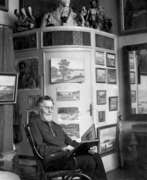

Antanas Žmuidzinavičius was a Lithuanian painter and art collector, celebrated for his significant contributions to Lithuanian art and culture. Educated at the Veiveriai Teachers' Seminary, he initially worked as a teacher while advancing his art education in Warsaw. Žmuidzinavičius's passion for art led him to Paris, where he studied at prestigious institutions such as the Académie Colarossi, enhancing his painting and drawing skills.
During World War I and the interwar period, Žmuidzinavičius played an instrumental role in safeguarding Lithuanian art and culture. He was a pivotal figure in organizing art exhibitions, and he dedicated considerable efforts to the collection and preservation of artworks amid political turmoil. His commitment to art extended beyond creation; he was deeply involved in education, teaching drawing at the Kaunas Art School and influencing generations of artists.
One of Žmuidzinavičius's most enduring legacies is the Devils Museum in Kaunas, a unique institution dedicated to sculptures and carvings of devils from around the world. The museum, which started with Žmuidzinavičius's collection, has grown to house over 3,000 items, reflecting a wide range of cultural perspectives on the devil. This museum not only showcases Žmuidzinavičius's fascination with folklore and mythology but also serves as a testament to his broad interests and contributions to Lithuanian heritage.
Antanas Žmuidzinavičius's work and his Devils Museum continue to captivate visitors, offering insights into Lithuanian culture, history, and art. For those intrigued by his life, contributions, and the unique devil collection, the Devils Museum in Kaunas is a must-visit, embodying the spirit of one of Lithuania's most notable artists.
For collectors and experts in art and antiques, the legacy of Antanas Žmuidzinavičius provides a fascinating glimpse into the rich cultural tapestry of Lithuania. Sign up for updates to stay informed on new product sales and auction events related to the incredible work of Antanas Žmuidzinavičius and to explore the depth of Lithuanian art and history further.

